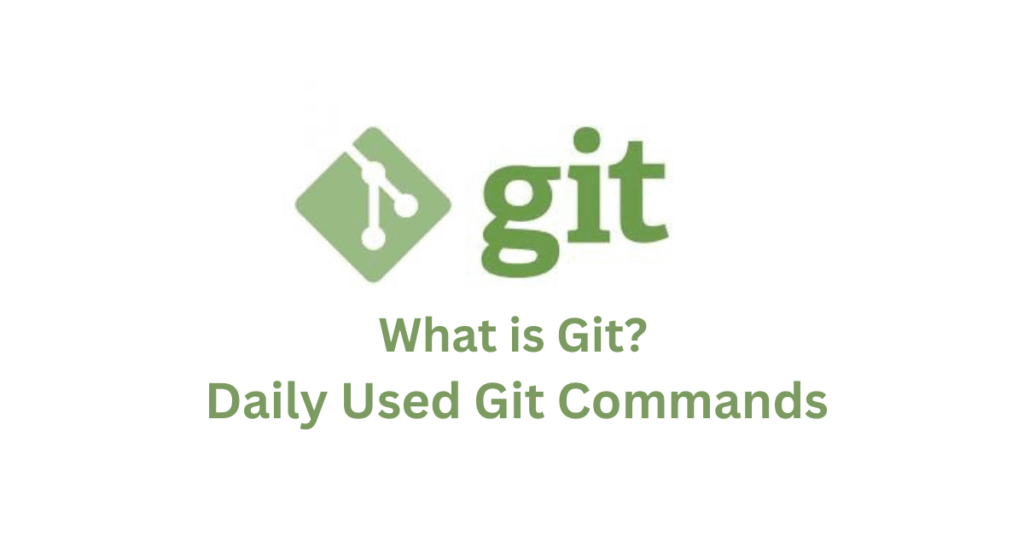
GIT is a popular version control system used to track changes in developers code, collaborate with others, and manage different versions of a project. We can say in a simple way,
GIT is a tool that helps you to track our project history/changes in your code and work together and return to older versions when needed. This is like a saved system for your project, which has teamwork features.
Why Use Git?
- It is Free, Open Source, Super Fast and Scalable.
- It is Cheap Branching/Merging.
- Track Changes – GIT saves every version of your code so that you can undo any time.
- Team Collaboration – More than one people can work on the same project without overwriting each other’s code.
- Work on Features Separately – Create branches to test new features without affecting the main code.
- Cloud Backup – Store the code safely on platforms like Github, Gitlab – access it from anywhere.
- Project History – Keep a clear record of who changed what and when.
Daily Used Git Commands (with Examples)
1. git init
Use: Initialize a new Git repository in your project folder.
cd my-project
git init
🔹 Now .git folder is created — your project is now being tracked by Git.
2. git clone <repo-url>
Use: Copy a remote repository (like GitHub) to your local machine.
git clone https://github.com/user/project.git
🔹 It creates a folder project with all the files and Git history.
3. git status
Use: Show the current state of the working directory and staging area.
git status
🔹 Tells you which files are modified, added, or staged.
4. git add <file> or git add .
Use: Stage changes to be committed.
git add index.html
git add . # Add all changed files
🔹 Moves files from working directory ➡ staging area
5. git commit -m "message"
Use: Commit (save) the staged changes with a message.
git commit -m "Add login feature"
🔹 Moves files from staging area ➡ Git history (commit)
6. git log
Use: View the history of commits.
git log
🔹 Shows commit IDs, authors, and messages.
7. git branch
Use: List all branches or create a new one.
git branch # List
git branch feature-login # Create
8. git checkout <branch>
Use: Switch to a different branch.
git checkout feature-login
🔹 Use git switch <branch> in newer versions.
9. git merge <branch>
Use: Merge another branch into your current branch.
git checkout main
git merge feature-login
🔹 Combines changes — resolve conflicts if needed.
10. git pull
Use: Fetch changes from the remote repo and merge into your local branch.
git pull origin main
🔹 Useful when working in teams — get the latest code.
11. git push
Use: Upload local commits to the remote repository.
git push origin main
🔹 Sends your changes to GitHub or another remote server.
12. git diff
Use: Show changes between working directory and last commit.
git diff
🔹 Helps you review what you’re about to commit.
13. git reset
Use: Undo staged changes.
git reset index.html
🔹 Removes file from staging area (not from disk).
14. git stash
Use: Save changes temporarily without committing.
git stash # Save
git stash pop # Restore
🔹 Helpful if you want to switch branches but keep your uncommitted changes.
15. git remote -v
Use: Check which remote repos are linked.
git remote -v
🔹 Usually shows origin pointing to GitHub.
Daily Workflow Example
git clone https://github.com/user/project.git
cd project
# Make some changes
git status
git add .
git commit -m "Fix: update login layout"
git pull origin main # Always pull before pushing
git push origin main # Push to GitHub
Bonus Tips
- Use
.gitignoreto avoid tracking unwanted files (like.env,node_modules) - Use
git checkout -b <branch-name>to create and switch to a branch - Use
git log --onelinefor a compact commit view
Popular Git Tools Every Developer Should Know
To make working with Git easier and more visual, many developers use the following tools:
1. GitHub
A cloud-based platform for hosting Git repositories. You can collaborate, review code, manage issues, and store projects.
2. GitLab
Another Git-based platform like GitHub. It offers powerful DevOps features like CI/CD pipelines, project planning, and code reviews.
3. Bitbucket
A Git hosting service by Atlassian. Integrates well with Jira and Trello for team/project management.
4. Sourcetree
A free desktop app (by Atlassian) for managing Git repositories through a visual interface – no need to remember all commands.
🔗 https://www.sourcetreeapp.com
5. GitKraken
A powerful Git GUI with an intuitive interface, ideal for managing branches, commits, and merges visually.
6. VS Code Git Integration
Visual Studio Code has built-in Git support. You can stage, commit, push, and pull directly from the editor.
🔗 https://code.visualstudio.com


Comments (0)
No comments yet. Be the first to comment!